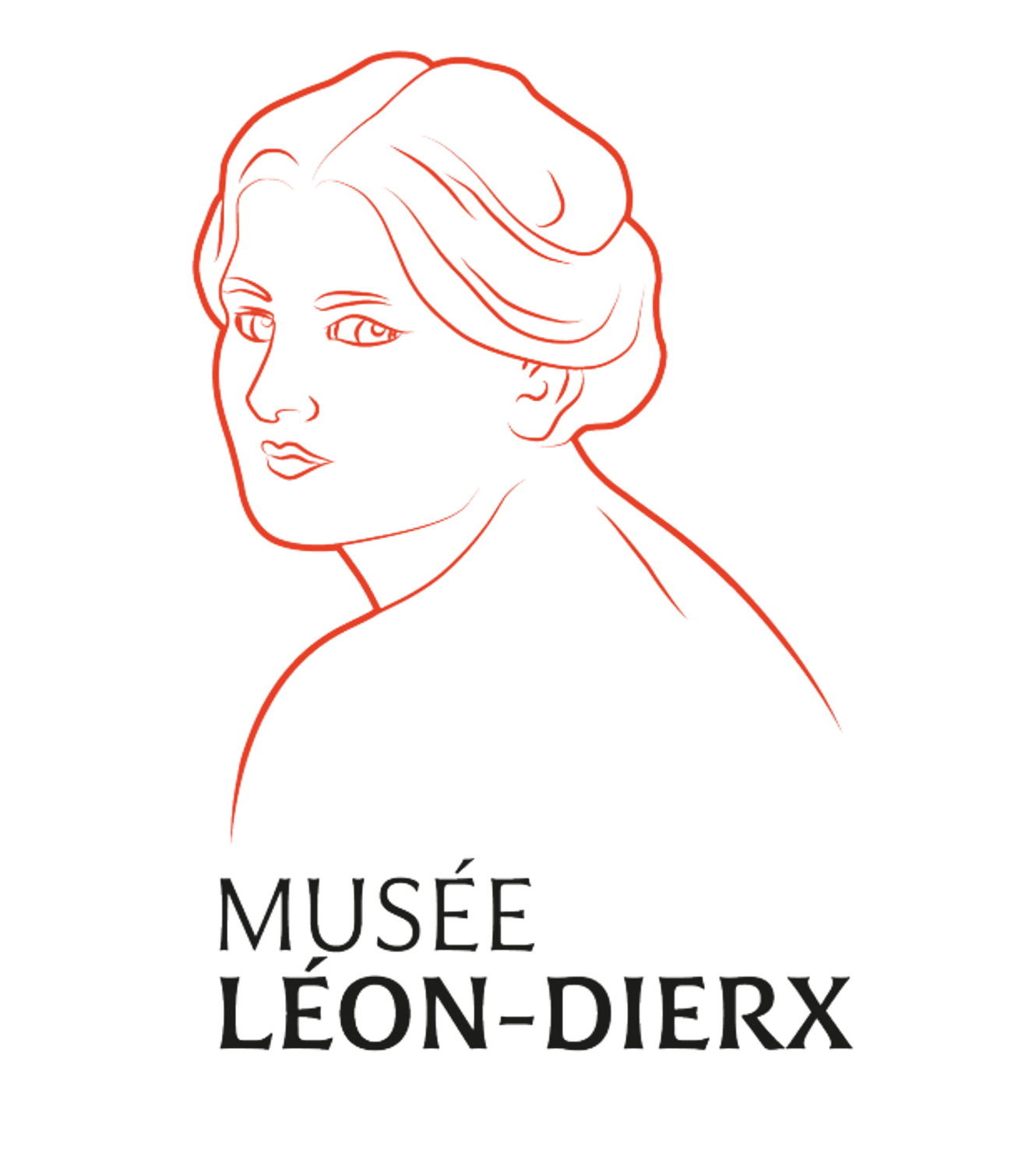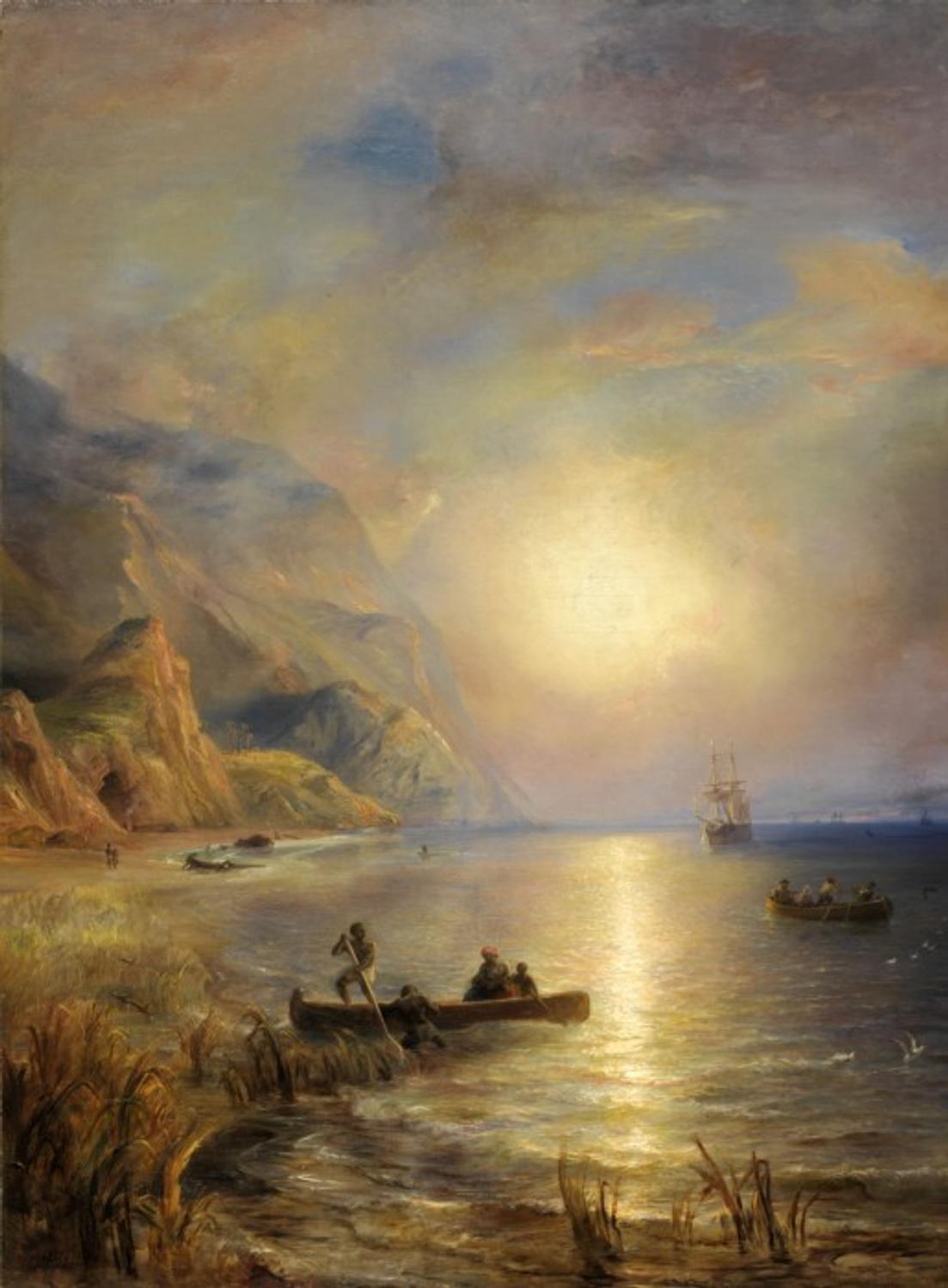THE MASTERPIECES OF THE LEON-DIERX ART GALLERY : Théodore GUDIN
Théodore GUDIN
Paris, 15 April 1802 – Boulogne-Billancourt, 12 April 1880
The precocious pupil of the Neoclassical painter Anne-Louis Girodet, Théodore Gudin initially had a short career in the French navy, during which period he travelled to America. On returning, he exhibited paintings representing marine subjects at the 1822 Salon. Influenced by the Romantic current and the English school of painting, his works were greatly appreciated by the public. At the 1824 Salon, he also attracted attention and was awarded a medal.
At the 1827 Salon, which represented a turning point in the history of Romanticism with, notably, the presentation of La Mort de Sardanapale by Eugène Delacroix, Gudin exhibited his painting of the very impressive fire of the Kent, a ship belonging to the British East India Company which caught fire in the Gulf of Gascony in 1825 with 650 military passengers on board. The painting was a huge success, with the artist being given the Legion of honour and receiving official protection from the Duke of Orleans. When the latter acceded to the throne in 1830, under the name of Louis-Philippe, he appointed Gudin as official painter for the French Navy, one of the first artists to be given this title in the 19th century.
Having become close to those in power, Gudin was commissioned to produce about 100 works to be exhibited in the historical rooms of the art gallery «dedicated to all the glory of France», which Louis-Philippe wished to see hanging in the château of Versailles. Gudin was to illustrate the many victories won by the French navy over the centuries. However, he also continued to exhibit his works at the Salon and divided his time between France and England, where his wife came from. After his death, his work fell into oblivion, before being rediscovered by French naval historians.
Un soleil levant sur l’île Bourbon, (Sun rising over Bourbon island), Théodore GUDIN
1868
Oil on canvas
230 x 170 cm
Inv 1979.05.01
Un soleil levant sur l’île Bourbon (Sun rising over Bourbon island), a very large-sized painting produced in 1868, with its sister painting Vue de la Méditerranée; Lever de soleil sur le Vésuve (View of the Mediterranean; Sunrise over Vesuvius) were the two main works in the posthumous exhibition devoted to Théodore Gudin in 1880, the year the artist died. Like almost all the painter’s works, the landscape was painted in his studio using various documentary elements: readings, accounts, etchings and personal experiences. Yet Gudin never visited Reunion island, his only experience of islands being a voyage to the Caribbean. He may have been inspired by lithographs, such as those by Roussin or Hastrel, or illustrations in the European press in the 1850s-1860s.
The painting depicts a landscape, but the artist also wished to represent the history of the island and its settlement. The painting is thus a historical landscape. In the foreground, a group of black men are disembarking on a beach with, curiously, reeds growing. This peaceful scene is totally unrelated to the historical reality of slavery, the origin and arrival of the black populations that arrived on the island. The allusion is purely exotic, simply conveying to the spectator the message that the scene takes place outside Europe. The island is symbolised by a large mountainous mass, at the foot of which can be seen a few palm trees and straw huts.
Gudin’s generously-proportioned composition is illuminated by the warm light of the rising sun, piercing through the clouds and reflected in the ocean. This visual effect was inspired by the paintings of Turner, which the artist observed during his long stays in London towards the end of his life.






